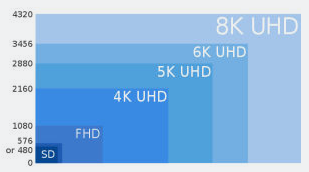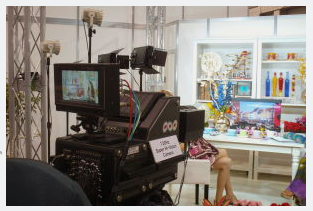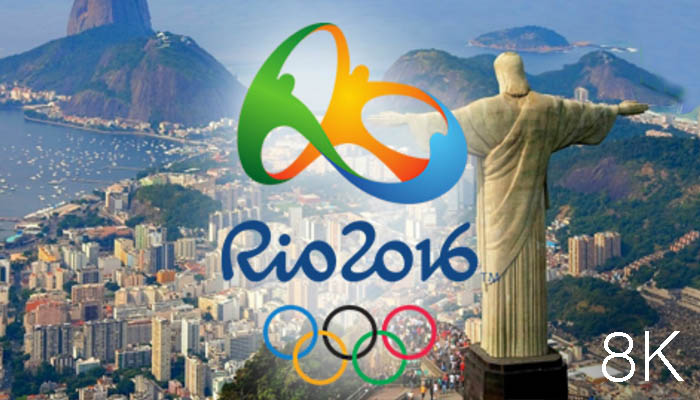The world’s first broadcast using 8K TV technology has begun on Japan’s public channel NHK. With a resolution of 7680×4320, has about four times the detail of a 4K broadcast, or 16 times what you’re probably watching at home (normal HD, 1920×1080).
 The 8K broadcast started on August 6th and it is being used to broadcast parts of the Rio 2016 Olympic Games, which are being filmed in 8K by special NHK cameras.
The 8K broadcast started on August 6th and it is being used to broadcast parts of the Rio 2016 Olympic Games, which are being filmed in 8K by special NHK cameras.
Viewing an 8K broadcast will be rather difficult even in Japan, as none of the equipment required to receive and display the 8K signal has yet been commercially released. Instead, NHK has set up two special 8K viewing theaters in Tokyo and Osaka for the duration of the Olympic games.
Technical Hurdles
NHK will broadcast the 8K signal via satellite. To get the data rate down to a level that can actually be handled by the satellite, NHK is using an 8K codec system that uses the new HEVC/H.265 coding scheme. The exact data-rate isn’t known, but it’ll probably be somewhere between 50 and 200Mbps, depending on the frame rate, with the spec allowing for up to 120FPS.
NHK’s Super Hi-Vision spec also packages up 22.2-channel audio with the broadcast, which will add a fair bit to the data rate.

An 8K camera
NHK has had to develop its entire 8K stack from start to finish—the cameras, lenses, 22.2 audio-mixing system, the other tooling that a new format requires, the codecs, the receivers, and so on. Since 2002 the company has been slowly ticking off each of the boxes required to film, produce, and broadcast content in 8K. In 2005, NHK transmitted transmitted a live 8K feed over fiber; in 2008 it standardized the 22.2 audio scheme; in 2010 it unveiled an 8K video camera; in 2011 it showed off an 85-inch 8K TV; and in 2012 NHK filmed some of the London Olympics in 8K.
The End Goal
There will eventually be terrestrial (i.e. free-to-air digital TV) and cable transmission of 8K broadcasts, but that is not coming quite yet, though they have been tested successfully. The end goal is for 8K broadcast tech to be completely mature by 2020, when the Olympics will be in Tokyo. 8K displays should cost much less than too.
Have a question about 8K televisions or general home technology? Contact us from the link below. One of our seasoned professionals can answer any questions you may have. Request a Consultation




